The Forecast
Editor’s letter: 2025 is the year of makers, fixers and the ambitious, says Andrew Tuck
What lies ahead? It’s tempting when compiling a magazine that looks over the horizon to only focus on the fantastical. But to do so misses trends and developments that are already under way and that are set to shape lives in equally meaningful ways. That’s why in the latest outing of The Forecast, we have matched the big vision, macro-trend predictions, with some close-up, deep dives into stories and ideas that are often under-reported.
Take Stella Roos’s story on prosthetics. When people lose a limb, or are born with without one, the consequences can be devastating – limiting lives, curtailing ambitions. Yet as anyone who has watched the Paralympics will know, if you have access to skilfully engineered replacement limbs, you can also be a dynamic, competitive athlete. The developers of these bionic arms and legs are now creating products that can be more powerful than flesh and blood. Roos, for example, meets the makers of the Utah Bionic Leg, which uses sensors and AI-powered controls to anticipate the movements of the user’s body, enabling above-the-knee amputees to climb stairs, hike and ride a bicycle. The pace of development in this industry is extraordinary and, in Roos’s reporting, you see not only a simple, comprehensible benefit of AI but also witness just how many people still dedicate their lives to doing good.
Another story that will make you reassess the communities that we live in – for the better – is Daniel Meyerowitz’s report on Seattle-based organisation Loose Ends. Its founders, crafters Jennifer Simonic and Masey Kaplan, kept hearing a similar story about what happened when someone in their network of knitters and weavers died: their grieving families would discover a half-finished tapestry or jumper and fret about what to do. It couldn’t be thrown away with a light heart but they often couldn’t complete the project either. This is where Loose Ends comes in to find someone to bring these craft tales to an end. Thousands are now donating their time and resource to the cause.
Our editors have also explored many of the hot-ticket trends shaping and reshaping their reporting beats. Our fashion director, Natalie Theodosi, and design editor, Nic Monisse, have assembled an Expo that looks at the investment being made by luxury brands into training a new generation of makers. The apprentice is the new must-have. Theodosi also tracks what’s next for sportswear and explains the rise of mid-price luxury-bag brands.
But it’s not only subtle social shifts or design and cultural trends that fill these pages. We also look at the complexities of switching to a green economy when you are a flush-with-cash petrostate – no, not Saudi Arabia, but Norway. And as drone warfare continues to develop at pace, we visit eos, an Australian company building a new generation of defence solutions.
The Forecast comes at a time when many rightfully worry about our direction of travel. After reading all the proofs for this issue, talking to our reporters and editors, I came away more alert to the risks we face but also inspired, hopeful. So here’s to an interesting future, to seeking out the makers, the fixers and the ambitious.
As always, please feel free to write to me, at at@monocle.com, or any of the monocle team. We wish you all the best for 2025.
The Danish churches putting faith in yoga, jazz and modern design
The Danes are among the least religiously observant people in the world, with just 2.4 per cent of the population attending church on a weekly basis. Across the country, rural churches are empty, making a recent church-building boom seem all the more improbable. More churches have been built in the past 10 years than have been deconsecrated and two more are under construction in Copenhagen.

One of them is in Ørestad, on the island of Amager, which is adjacent to the city centre. “We are building new churches because the demographics are always changing,” says Eva Ravnborg, a partner at Henning Larsen architects. The firm designed the new DKK78m (€10.45m) building, which broke ground in October, as well as other churches, including Højvangen in Skanderborg, in southern Jutland.
Previously, community events took place in a separate hall or basement but if a church is to be used for yoga classes and jazz concerts, the main space must be as flexible enough to allow for improvisation. “There will be no fixed furniture in Ørestad – not even the pulpit,” says Ravnborg. “The priest can preach from any corner and they will do it at eye level, not raised above the congregation.” The hope is that this approach will enable churches to remain full. “They need to be relevant for another 50 years,” she says.
Ørestad is among the most culturally diverse districts in Copenhagen so, while churches used to be designed to inspire awe, this one, built from timber, has a different remit. “Traditionally, churches had a very closed exterior. If you want to keep churches alive, you need to open the doors wider. You still have that sense of being connected to something bigger than you; the changing light during the day keeps you in contact with the natural world.”
Churches may not be the biggest earners for architecture studios but in terms of job satisfaction they offer a fulfilling project. “Churches have a complexity and purpose. It’s very rewarding to work on a space that touches people,” says Ravnborg. “It’s a building that shows how much atmosphere and emotion a space can evoke.”
Devotional architecture: new and notable places of worship
1.
Djamaa el Djazaïr
Algiers, Algeria
Inaugurated in 2024, the Great Mosque of Algiers was designed by German architects KSP Jürgen Engel Architekten and Krebs und Kiefer. It has the world’s tallest minaret (265 metres) and has space for 120,000 worshippers.
2.
Saemoonan Church
Seoul, South Korea
South Korea’s strong Protestant tradition has seen several extraordinary churches consecrated in recent years: look out across Seoul at night and you will see a constellation of neon crucifixes. This 13-storey, twin-towered church opened in 2019. Its curving frontage is supposed to evoke welcoming arms but achieves the look of a shopping mall.
3.
Temple in Stone and Light
Barmer, India
The religion most associated with architectural flamboyance is Bahá’í (one thinks of the lotus-shaped House of Worship in New Delhi) but elsewhere in India, SpaceMatters’ Temple in Stone and Light, dedicated to Lord Shiva, brilliantly modernises the Hindu temple vernacular with its warm sandstone and austere simplicity.
Clean-up act: The stylish solution to Bali’s waste troubles
When Amanda Marcella joined Indonesian hospitality group Potato Head to help with expansion at its Bali hotel and beach club, she didn’t expect to become obsessed with cigarette butts, used napkins and old bed linen. All now occupy her thoughts: she is the hotel’s director of sustainability. Her purview extends far beyond straws and plastic bottles at the Potato Head’s home in Seminyak. “Here we’re doing something for the planet,” says Marcella, as she takes Monocle to see Potato Head’s NGO, The Community Waste Project, which opened in October next to Bali’s biggest refuse dump.
Bali’s beauty is renowned but it has a rubbish problem. The government estimates that some 52 per cent of the island’s waste is mismanaged, with plastic washing up on beaches and littering streets. The rest ends up in landfill, where the refuse forms huge malodorous piles. Dry weather, plus methane produced by the waste, can trigger fires that cover the island in foul smoke.
In 2016, Ronald Akili, Potato Head’s CEO and co-founder, decided that his company needed to do something. Since then it has reduced the amount of its rubbish that ends up in landfill from 60 per cent to 2.6 per cent. Styrofoam is melted with acid and mixed with powdered oyster shells to make material for containers such as soap dispensers. Used cooking oil becomes candles. And plastic is melted into panels that then become furniture. The Community Waste Project is the next step. Here, pre-sorted rubbish bags are audited, heaps of covered compost take up one corner while melting machines turn buckets of shredded plastic into pallets. Anything that can’t be processed on site is handed over to trusted third parties.
But this is just the start: the facility has a daily capacity of 10 tonnes but Bali produces 1.6 million tonnes of waste a year, with about 15 per cent coming from the hospitality industry. The aim is to make the project replicable. The new waste centre was founded in collaboration with two other companies, with five more paying a monthly waste-disposal fee. All benefit from Potato Head’s expertise, says Isabella Rowell, CEO of The Mexicola Group and a co-founder of the project. Without detailed knowledge of how waste disposal actually works, even well-intentioned measures can go awry. Rowell recalls how her restaurants and bars ditched plastic straws for recyclable ones some years ago only to later discover that the new straws needed a special machine to be recycled and there was no such machine in Bali.
The new project means that their efforts help more than just their image. “Sustainability is a huge marketing tool but realistically, if things continue as is, we won’t have a business any more,” says Rowell, who is clear-eyed about the industry’s urgent need to clean up its act. Bali’s allure will eventually fade if it ends up buried in plastic wrappers and used condoms, so the local government is talking about restricting new hospitality developments in tourism hotspots.
The long-term plan for The Community Waste Project is to turn a profit from charging user fees and selling recycled products. This revenue should cover expenses and further expansion. New partners are being actively sought out and there are even hopes to move into processing domestic waste. Almost no one recycles in Bali but given the opportunity, this could change. Staff at Potato Head are already bringing in some of their household waste and this environmentally minded community has a record of driving meaningful change.
seminyak.potatohead.co
Calling the tune: How live music is helping to revive Thailand’s empty high-rises
Listening to live music is a favourite pastime in Khon Kaen, a city in the northeast of Thailand – and the best seat in town is at the top of a tall building. Last year, music venue Kaenkaew Live House opened on the 28th floor of the Khon Kaen Innovation Centre. The 300-seat space has since hosted Thailand’s top musicians, from Slot Machine to Burin Boonvisut. Rock bands and pop stars performing to a full house marks a significant improvement on the building’s former tenants: wild bats and a few nesting birds.
For more than 20 years the Khon Kaen Innovation Centre was a concrete shell – a victim of the Asian financial crisis of 1997 that brought an end to a booming decade and halted construction across the bankrupt country. Plenty of these stalled projects have remained empty ever since. Most famous is Bangkok’s Sathorn Unique Tower, a windowless riverside apartment block, which is now being used as an advertising billboard to sell luxury products to those stuck in traffic while crossing King Taksin the Great Bridge.
Completing these ghost towers is not on the government’s agenda for now. Nevertheless, Khon Kaen provides a case study for the private sector – and a worthwhile pilgrimage for property owners of old towers. What to do with underutilised high-rises is one of the biggest sustainability issues facing the property industry. The Khon Kaen Innovation Centre’s prospects changed in 2018 when it was sold to Mitr Phol Group, one of the world’s largest sugar producers. The Bangkok-based corporation, a major investor and employer in the surrounding Isan region, spotted an opportunity for a regional HQ in a city-centre location. The project was handed to Heritage Estates, a commercial property developer that specialises in renovating office towers. “For a lot of people in Khon Kaen, the building stood as a constant reminder of what could have been,” says Gavin Vongkusolkit, Heritage Estates’ founder and managing director.
Two Heritage Estates-owned brands have become anchor tenants at the Khon Kaen Innovation Centre: the 120-key Ad Lib hotel and a Glowfish co-working space. “There are so many things that you can do on an operational level to be sustainable but it’s best to use old structures that are already there,” says Vongkusolkit. “No matter how many plastic straws you don’t use, it just can’t compare to reusing all of that concrete and steel.”
Knocking down a building can often end up being cheaper than repurposing it. According to Vongkusolkit, developers who are looking to implement adaptive reuse need to take a broader view of the potential benefits and returns on investment. Once an eyesore, the Khon Kaen Innovation Centre serves as an example of what Thailand’s ghost towers can become and is a symbol of a city on the up. Khon Kaen Airport has opened its first international terminal and a high-speed rail link connecting southern China to Bangkok is due to stop nearby. As foreign interest in Khon Kaen grows, it won’t be long before the first overseas artist takes to the Kaenkaew stage and brings the house down, figuratively speaking.
Reel potential: Is Uruguay South America’s next cinema hotspot?
Facundo Ponce de León is a man on the move. The president of the Uruguayan Film and Audiovisual Agency has just landed back in Montevideo after a whistle-stop tour of Europe, touting his country at the London Film Festival as the place to make movies in 2025 and learning how the UK and Germany built their national film archives. “We’ve never had a film win a Palme d’Or in Cannes or even be in the main festival,” says Ponce de León. “But we are creating the conditions to get there in the next two or three years.”
Uruguay came on the radar of many film-location scouts during the pandemic, when it became the first country in Latin America to open its borders to working film crews. It might lack the snowy peaks of Patagonia or the grandeur of Lake Titicaca but Uruguay is drawing the big streaming networks and studios with its generous tax and cash rebates. In 2024 there were 35 co-productions made in Uruguay, 12 of which were feature fiction films. In December 2024, Uruguay will host the Ventana Sur, Latin America’s biggest market for film and television, which is usually held in Argentina.
“Our offer to Netflix, Amazon, Paramount and others is that we give back up to 25 per cent of whatever they invest [in making a film here],” says Ponce de León. “If they hire a Uruguayan script writer or directors, even as a second unit, we will give them 5 per cent more.” That was the case with Amia, a slick series with a Uruguayan director on the crew, telling the story of the terror attacks on Israel’s embassy in Buenos Aires in the 1990s with Montevideo’s art deco centre standing in for the Argentine capital.

Uruguay is tapping into its larger neighbour’s stardom. Since Argentine president Javier Milei slashed public budgets, the state’s longstanding backing for cinema has sharply declined but in Montevideo a strategy to support film production is now a part of public policy that’s expected to continue into the next administration. At a tumultuous moment across Latin America, with political upheaval and shaky economies, the so-called “Switzerland of the Americas” looks relatively steady.
There are about 1,000 companies in the audiovisual sector in Uruguay, which international productions can tap into. “The field of people working in media here is enormous, given that it’s a population of just three million people,” says Pablo Casacuberta, a filmmaker and director of Montevideo’s Gen Centre for Arts and Sciences. His business partner, film producer Juan Ciapessoni, agrees. “For many years, Uruguay was a place to leave if you wanted to find investment,” he says. “But now it is becoming an island of stability.”
Narrative threads: Fashion houses are investing in filmmaking in a new era of brand storytelling
The past couple of years have been brutal for Hollywood, with the 2023 actors’ and writers’ strikes miring the big studios in financial difficulties and having long-term repercussions for production schedules. But there is a crack of light over the Santa Monica mountains. European fashion houses are planting their flags in the entertainment industry and making major investments that are re-energising Tinseltown and shifting industry dynamics.
In late 2023, François-Henri Pinault, the owner of French luxury group Kering, took a majority stake in Creative Artists Agency (CAA) for $7bn (€6.6bn), gaining access to the biggest black book of Hollywood talent. A few months later, Kering’s competitor LVMH announced plans to establish a media arm called 22 Montaigne Entertainment, named after the group’s Avenue Montaigne office address in Paris. The venture’s CEO, Anish Melwani, told Variety magazine that LVMH is hoping to explore opportunities in TV, film and audio production “that will showcase unique portfolios and values” for its brands.

This increased involvement is starting to reshape how movies are made and who calls the shots. Fashion and film have long been partners but, until now, the relationship has tended to be transactional – think the politics and backroom deals that go into who dresses who on the red carpet. An association with the right label has long been a tool used to propel an actor’s career to new heights. “Certain stars really understand the way that it works,” says Valerie Steele, the director and chief curator of the museum at New York’s Fashion Institute of Technology. “Marlene Dietrich always insisted on being dressed by Dior, both on- and off-screen.”
Now there’s an opportunity for the labels to develop these relationships and become more involved in filmmaking. “Brands currently invest more than ever in Hollywood but their budgets have been going towards red-carpet events and product placement,” says Lauren Sherman, the Los Angeles-based fashion editor of news start-up Puck. “The thinking is, ‘Why not make the films ourselves?’”
Saint Laurent, which is owned by Kering, has already launched a fully fledged subsidiary dedicated to filmmaking. In January, Saint Laurent Productions will release The Shrouds, a horror movie written and directed by David Cronenberg. It is one of three features that the company produced in 2024, all of which were screened at the Cannes Film Festival. “I want to work with and provide a space for all the great film talents who have inspired me over the years,” said the label’s creative director, Anthony Vaccarello, at the time. Vaccarello has also worked with the likes of Pedro Almodóvar and Paolo Sorrentino. Naturally, he gets the last word on the clothes in all of the pictures.

The big investments aren’t just making the love affair between fashion and film more public. They also reveal how swiftly and significantly the idea of marketing is changing. Luxury brands have traditionally spent vast sums supporting contemporary art, enjoying the prestige that comes with it. Today, however, some are no longer content simply to be patrons of culture – they want to be its creators too. And they are willing to invest more money in telling stories that draw from their values or histories.
There are already many films and TV series depicting the fashion industry, including La Maison (Apple TV1) and Cristóbal Balenciaga (Disney1). But none of these productions come from the actual luxury houses. Ridley Scott’s 2021 film, House of Gucci – which tells the damaging story of the 1995 murder of Maurizio Gucci – highlights what can happen when such brands aren’t in control of their own narrative.
LVMH has been quiet about what 22 Montaigne will do next but it is understood that it will be looking at films to develop. The entertainment arm’s founding partner, Superconnector Studios, is one of a growing number of agencies specialising in bringing brands and studios together. “It’s simple – entertainment makes a lot of money, whereas advertising costs you money,” says Jenna Barnet, the CEO of Sunshine, a brand consultancy based in London, Los Angeles and New York. It has helped Victoria’s Secret to shoot a full-length documentary in lieu of a traditional runway show; the company also developed a drama series with the UK’s Channel 4 for Parisian luxury house Balmain. “We find ways of getting world builders to talk to each other,” says Ed Warren, Sunshine’s chief creative officer.
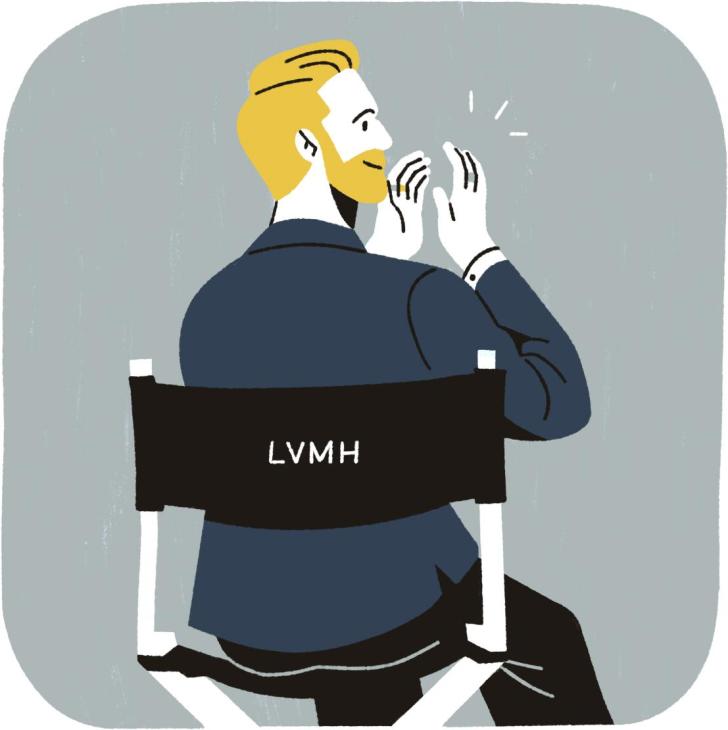


Storytelling is a form of soft power, says Warren. He cites Apple TV1, which commissions films and series that communicate the idea of being best in class, from the calibre of the talent to the production values. This benefits the streaming service’s parent company, Apple Inc, even though the stories have nothing to do with the phones and computers at the core of its business. “It’s building status equity, not simply as a sponsor of culture but as an active participant,” says Warren.
In fashion, Tom Ford was ahead of the game. He directed and produced two successful films – A Single Man and Nocturnal Animals – while he was still in charge of his eponymous fashion house. Neither movie made any direct reference to the brand (aside from the clothes that the characters wore) but they invited the audience deeper into Ford’s world and his aesthetic. Crucially, the films linger in the mind longer than any conventional advertisement. “A film has to be something that haunts you,” Ford told Vanity Fair.
The challenge for brands seeking to dip their toes into filmmaking is to create something that’s worth watching. Critics panned the Apple TV1 show The New Look, about the life of Christian Dior, for its poor character development and tepid script. There’s an opportunity for brands to mine their archives and tell their own stories in more compelling and favourable ways. After all, audiences seem to have an insatiable appetite for depictions of the industry. These are plotlines that write themselves, full of power, glamour and politics – and usually the added spice of familial strife.
But if these luxury behemoths want to make a true mark on Hollywood, they should follow Saint Laurent’s example and take risks with the stories that they tell. “Will people take 22 Montaigne seriously?” asks Sherman. “That depends on whether it can make something good.” Given their enormous budgets, vastly wealthy owners and access to top talent, fashion groups have unique opportunities to start influencing what we see on our screens, just as much as they influence the contents of our wardrobes. If played right, they will occupy a place in our imaginations once held by the big studios during the golden age of Hollywood. Pass the popcorn.
From film to geopolitics, 10 sharp predictions for how the world will change before 2026
1.
Emerging markets will top the box office
Cameron Bailey, CEO of Toronto International Film Festival, on the future of the global film industry and why audiences are looking beyond Hollywood.

I’m hoping for balloons and cake when tiff celebrates its 50th edition in 2025. I’m excited to learn about new features and filmmakers this year. In 2024 many Cannes festivalgoers discovered Payal Kapadia through her arthouse hit, All We Imagine as Light, and Laura Carreira through her debut, On Falling. I can’t wait to see who’s next.
I don’t believe the accepted wisdom that screen stories can only get shorter and more synthetic. For the film industry to remain inspiring, all that it needs to do is look for new voices and new regions, and trust in the infinite curiosity of filmgoers. I’ll be first in line to see the clunky attempts at mainstream movies built by artificial intelligence. Big moments in film history always tell you a lot about the art form. The introduction of colour, widescreen shots, 3D and computer animation to screens all spring to mind. When we begin to better understand artificial intelligence and its capabilities beyond simply imagining new stories, we’ll have more pressing things to worry about than what it has done to cinema.
As technology continues to upend the film industry, the work of trailblazing filmmakers, such as India’s Rima Das, is more important than ever – and a powerful argument in favour small-scale craft. I’m keeping an eye on Winnipeg’s Matthew Rankin, who recently directed Universal Language, one of the most original comedies that I have ever seen. There’s also American actor Danielle Deadwyler. I hope that we all get to see her do bigger and wilder roles on screen.
The main challenge that the sector is facing is pessimism. Over the past decade, every corner of industry has been rattled by fast, disorienting change. The old business models are dead. Filmmakers might want to curl up in a corner next to newspaper publishers but, like journalism, screen storytelling can – and must – be reinvented. I draw optimism from audiences, especially young ones, who are as thrilled by seeing their first Edward Yang classic as they are by sexy new hits such as Anora. After coronavirus-pandemic restrictions lifted in Canada, we decided to make tiff’s year-round programming more accessible, particularly to those under 25. Now we have young people glued to Oscar contenders as well as classic films.
If you like discovering new pop-culture trends, then my advice would be to keep an eye on Southeast Asia and Africa. The next great filmmaker could come from Vietnam, Malaysia, Nigeria or Indonesia. These countries will definitely produce some of the most influential future filmgoers as their young audiences grow.
2.
Physical retail is here to stay
Cape Town-based designer Sindiso Khumalo on the future of the global fashion industry, eco-conscious consumers and why in-person shopping is more important than ever.

Today’s designers are creating for a generation that cares more about making environmentally conscious clothing choices. Big brands will have to relate to that customer, otherwise they risk losing market share. A lot of people can be cynical about sustainability but I think that it’s a fantastic thing; any change is a good change if it’s in the right direction. But it’s very expensive to be sustainable. Large fashion brands should work with smaller labels to create a better kind of fast fashion – one that isn’t destroying the planet.
War and uncertainty have dominated the agenda in 2024. All of this has affected the economy, which had knock-on effects in the fashion industry. It has led to real concern among major brands. The last thing that people think about buying at a time of instability is a pretty dress.
But I’m an optimist and I always say that nothing lasts for ever. Brands have the opportunity to re-evaluate how they speak to and understand their customers. People want the truth, whether it’s about leadership in governance or where their clothes are made. They want more transparency. Businesses need to take accountability and decide how they’re going to operate.
The future of the fashion industry will hinge on brands having physical shops. I’m opening my first retail space in December 2024. Shopping well is a treat – and it’s an experience that should be honoured. I remember people telling me 10 years ago that it would all eventually be online. This is not the case. Most of us want a tactile experience – probably even more so now because almost everything we do is on screens. Physical shops aren’t going anywhere. If anything, more designers will open retail spaces over the coming years.
There will also be geographical shifts in the fashion industry, with businesses pivoting to focus on growing markets in Asia or Africa. Brands will increasingly begin to think of themselves as part of a global community.
3.
Global power will shift to Asia – and Europe must adapt
Former Singapore permanent representative to the United Nations Kishore Mahbubani on Asia’s prospects on the world stage.

The year to come marks the start of the next quarter of the 21st century – a quarter that I believe will be dominated by Asian politics and culture. The balance of world power is shifting from West to East. The most dangerous issue in Asia is the security of Taiwan, given that it could trigger a collision between the two biggest global powers: the US and China. But both countries understand that war would be disastrous. Even though they have conflicting perspectives on Taiwan, they will avoid entering into a direct confrontation.
The US-China relationship will probably remain troubled for the next 10 years, regardless of who is in power. Geopolitics is driven by structural factors, not personalities. There will be challenges to navigate for at least two or three more presidential terms, until a new equilibrium develops.
Southeast Asia is a politically underrated part of the world. Among the Asean group of nations, there are strong new leaders in Indonesia, Malaysia, Singapore and Vietnam. The bloc will continue to do well over the coming decade. As geopolitical tensions rise, it’s important for countries to find safe venues in which to talk to each other. Asean events have convening power – they’re one of the only places in which both the US and China feel comfortable communicating.
Territorial disputes in the South China Sea will remain a challenge but I’m reasonably confident that there won’t be a war. There might be skirmishes and tensions but China knows that it has to be very careful in how it manages relations with its Asean neighbours. Relatively speaking, the bloc is friendly towards China, so it’s not in Beijing’s interest to alienate the countries within it.
There are still many people in the West who believe that the G7 group of nations will continue to play the biggest and most significant role in the global arena. But I believe that it is in its sunset years. Its importance is diminishing. By contrast, Brics, which was founded by Brazil, Russia, India, China and South Africa, is being taken more seriously and has suddenly expanded to include new partner states such as Egypt and Ethiopia. The conventional wisdom in the West is that, one way or another, geopolitical power will remain with the West. I disagree. Over the next 25 years there will be a significant shift in power towards the Global South – and the West is completely unprepared.
4.
Despite rising tensions, nuclear threats are on track to fizzle out
London-based Open Nuclear Network director Andreas Persbo on nuclear arms and the distant possibility of disarmament.
It feels as though we’re nearing a threshold. The relationship between Iran and Israel is teetering on a razor’s edge. Israel is believed to possess nuclear weapons and Iran is closing in on them. The question of Iran’s nuclear ambitions is one of those persistent issues that no one really knows the answer to. But it has never felt more pressing than it does now, especially as the country’s recent tensions with Israel have pulled the topic of nuclear armament back into sharp focus. By most estimates, Iran would need about a year and a half to fully weaponise if it made that choice, though there are indications that it could compress that timeline. The country has already developed missiles and delivery systems to deploy such capabilities. A nuclear-armed Iran would fundamentally shift the region’s security landscape. It would amplify risk in ways that would ripple far beyond the Middle East.
Hollywood has painted this picture of a nuclear explosion as a big bang, a shockwave after which the hero shakes off the dust and steps into a post-apocalyptic world. But that is far from the reality. Nuclear weapons don’t just destroy structures: they create a wasteland, unravelling every thread that civilisation is built on. In the event of a large-scale nuclear conflict, there’s no “starting over”. It’s cataclysmic. This isn’t Mad Max. It’s an end with no second act.
I would rather see humanity go through two conventional world wars in the next century than a single nuclear war. We can rebuild from conventional warfare. Yes, the suffering is terrible and the cost is unimaginable but it’s something that we can come back from. Introduce nuclear weapons, though, and the stakes change. Nuclear war is unwinnable and once it happens, there’s no going back. And yet, here we are, willing to gamble on that possibility.
Striking a balance between deterrence and arms control has traditionally relied on bilateral efforts between the US and Russia. This has led to the largest reductions in global nuclear stockpiles and is still a method that holds promise. But for complete abolition? Multilateralism is the only viable route. For now, international disarmament is a vision for the future – and one that requires much patience and groundwork. We need to think strategically and in a way that respects the real security concerns of nuclear states. It’s about laying the foundations for a peaceful world order – step by step, consensus by consensus.
Nuclear weapons will no longer be part of the global-security framework by the end of the century. By then these weapons will have held sway over international relations for more than 150 years– and that’s a very long time. The world’s trajectory is marked by resource scarcity, climate crises, energy demands and mass migration and points to a new time with different challenges.
5.
Sustainability will be luxury hospitality’s number-one sell
Ho Ren Yung, deputy chief executive officer at global hospitality firm Banyan Group, on greenwashing and the death of the social-media aesthetic.

Slow travel is something that will continue to grow in popularity in 2025. I would define the concept as a choice to travel more intentionally, with an increased focus on connection and wellbeing, culturally rich and authentic experiences, and environmentally conscious itineraries.
The increased attention on regenerative tourism is a positive thing for the hospitality industry. The Banyan Group was built with this in mind. More and more businesses are beginning to combat decades-long issues stemming from over-tourism.
One of the biggest challenges facing the hospitality sector over the coming year will be balancing growth with meaningful sustainability practices. The industry must go beyond surface-level “green” initiatives and embed eco-conscious practices deep into every aspect of its operating model, from construction and energy use to waste management and partnerships. This will require both substantial investment and innovation, especially when it comes to adapting properties to meet more stringent environmental standards.
The growing presence of women in hospitality leadership is not only levelling the playing field but also changing how we operate and connect with guests. In traditionally male-dominated areas, such as operations, we’re seeing a new generation of female leaders bring diverse insights, empathy, and an exceptional focus on community and sustainability to the fore. More is being done to support women taking their first steps into the industry, as well train and equip them with the skills needed to advance their careers.
There are significant growth opportunities in travel markets across Asia, the Middle East and, increasingly, North America. Asia is playing a pivotal role in the sector, with countries such as China and Japan experiencing a resurgence in luxury tourism, particularly among younger, affluent travellers seeking sustainable travel options. The Middle East market is also among the world’s fastest growing, fuelled by a robust surge in tourists interested in immersive, wellbeing-focused trips.
What won’t survive in the new year? Places designed primarily for aesthetic appeal in photos rather than for meaningful guest experiences. The industry has long been captivated by photo-ready decor meant to drive social-media engagement. But this superficiality now feels increasingly out of touch with society. Hotels will move away from creating these picture-perfect spaces and instead focus on thoughtfully designed environments that encourage genuine interaction, comfort and respect for culture.
6.
Gene editing will eradicate rare diseases
Berkeley biochemist and winner of the 2020 Nobel Prize in Chemistry, Jennifer Doudna, on reducing greenhouses gases and genetic diseases through DNA modifications.

Crispr-based genome editing is a field that’s moving very quickly. [Crispr is an acronym that stands for “clustered regularly interspaced short palindromic repeats”.] The technology allows scientists to change the genetic makeup of organisms by making targeted breaks in dna and then harnessing its natural repair processes to modify the gene in the desired manner. This means that we can now do things such as correct disease-causing genes and make changes in microbes that affect the way that crops are grown or help us to deal with climate change. Over the next year we’ll continue to see advances in all of these areas.
In 2023 the US Food and Drug Administration approved the first Crispr-based gene therapy for sickle cell disease. I expect similar breakthroughs to come in future. I’m not sure whether this will happen in 2025 but it will certainly take place over the next two years. More Crispr-based therapies will be approved and a wider range of patients will able to access them. In agriculture, Crispr-made crops are already coming to market. I’m certain that we will see an increase in the number of these yields in the next year and beyond.
On the healthcare side, there’s an ongoing debate about how to use Crispr in ways that will be most effective for patients. Up until now it has mostly been used as a tool with broad applications for the treatment of rare diseases. But I suspect that we’ll see an increased interest in using the technology to inform our approach to preventive medicine in the future. Due to the specific way in which Crispr targets dna, it might become possible to make changes in genes that cause hereditary illnesses, including cardiovascular and neurodegenerative diseases.
An exciting project that we’re working on at the Innovative Genomics Institute is targeting the microbes in cows that produce methane. The exponential rise in global temperature is partly attributed to methane – one of the most powerful greenhouse gases. Agriculture contributes to a large fraction of the amount that is emitted around the world every year. Crispr could have a real effect on reducing these emissions in an accessible, cost-effective manner by making specific changes to the gut microbiomes that produce gas in the stomachs of cattle. We’re already at a point where we know that we can do it. So now we have to ask ourselves, “How do we scale it?”
I don’t think that the gene editing of embryos will happen any time soon. But it’s a very real possibility in the future and something that we all need to be aware of as a potential use of Crispr.
7.
Trump will overcome domestic division
Glenn Corn, senior director for geopolitics and global threat assessment at the Institute of Critical Infrastructure Technology, on US foreign policy under the next Trump administration.

We’re probably going to see a tougher line on China under the next Trump administration. Trade will be one of the government’s main focal points. War in the Middle East is a contentious issue; it’s a tinderbox. The Israelis are probably breathing a sigh of relief right now. They were very concerned that the US was moving away from them. But my guess is that the relationship between Benjamin Netanyahu and Donald Trump is good. In more than a year of war between Israel and Hamas, US public opinion on the conflict has continuously shifted. The war has significantly altered the relationship between the US and one of its closest allies – and it’s unclear whether it will recover. Nevertheless, the Trump administration has to continue to work with the Israelis.
Gulf states will welcome the return of a Trump administration. The US will hopefully be able overcome the obstacles that Iran has created in this area and continue to improve its relationship with the Middle East. In the long run this would also help the Palestinian people and ease some of the tensions in the US.
I was just in Turkey and many people there were happy that Trump had been re-elected. They felt neglected by the Biden administration. With Trump in charge, the US now has the opportunity to revive its relationship with Turkey and review its policies. It will be interesting to see what Turkey’s position will be on Israel and Palestine. President Recep Tayyip Erdogan has adopted a strongly anti-Israel stance since the war in Gaza began. How will the US handle that, especially if it is going to try to improve relations with Tel Aviv?
The new Trump administration was elected on domestic-policy promises. It will have to focus on the economy and other social issues that are important to voters. I don’t know whether it will be possible to address all of these problems at the start. But I’m hopeful that the new government will pay more attention to Africa and Central Asia, and be more culturally sensitive to the countries that it is trying to build relationships with. This means less lecturing and instead, more listening and more flexibility. There will be more action, not just words.
8.
Africa and Asia will become the centre of the world’s urban future
Wong Mun Summ, the director of WOHA architects, on the how the changing climate is encouraging us to adapt the way that we design cities.

I’m on the nominating committee for the Lee Kuan Yew World City Prize. We awarded the 2024 award to Mexico City. When I met its leadership team, I was convinced that it was somewhere I should keep an eye on. The Mexican capital isn’t starting from scratch; it’s a very old place with a long history. But it is implementing new policies and seeing good results from them.
There is so much potential to design and plan metropolises in a different way to the past. Going forward, there will be two forces at play: at one end, commercialism, and at the other, responsible design and planning. They need to come together. Cities, at the end of the day, should be liveable, vibrant and beautiful so that they remain attractive to people. Urban environments compete against each another. We need to strike the right balance between economic growth and societal good.
Our cities are big. But in the future they’ll be even bigger. Small cities will become large cities and large cities will become megacities. In places such as Africa and India, there will be a lot of urban growth. India is rapidly urbanising and will see similar growth to what China has experienced over the past 25 years. New cities are also going to appear in Southeast Asia. It’s important that they are designed in both a sustainable and regenerative manner.
Existing metropolises are still viable and they will continue to make themselves more liveable. European cities have been doing well with implementing clean-energy policies. Climate change presents us with the opportunity to rethink architecture. We need to come up with innovative, responsible solutions for a better future.
9.
Putin will expect Trump’s support – but it might not be forthcoming
Candace Rondeaux, head of the Future Frontlines programme at the New America think-tank, on the future of the Russia-Ukraine conflict.
Vladimir Putin will see a partnership with Donald Trump as a victory for Russia in its war against Ukraine. Over the coming year there will be tremendous pressure on Volodymyr Zelensky to cut a deal with Moscow. But the problem is that it’s really not up to Zelensky. Some 48 million Ukrainians have already answered the question of their future by fighting this war. We shouldn’t expect to see rapid capitulation, even in the event that Trump delivers on his promise to drastically reduce aid to Ukraine.
The challenge is now to reckon with this stark reality. Zelensky knows that there are serious military challenges. One possible solution would be to establish an accord on some sort of no man’s land. An armistice similar to that of the 38th parallel solution between South Korea and North Korea could provide Ukraine with a viable path to long-term security.
We should be very worried about the prospect of North Korean troops [which are in Russia preparing for deployment] becoming a bulwark inside Ukraine. If the West has to strike those troops in order to save Ukraine or buffer the Polish border, then it will find itself in a situation where it is directly attacking a nuclear-power state that has zero motivation to co-operate, collaborate or capitulate in any kind of negotiated, high-stakes situation.
The danger of Ukraine falling or failing cannot be overstated. It could affect everything from China’s stance on Taiwan and border security at the edge of Poland to nuclear proliferation. It also has long-term implications for the relationship between North Korea, Iran, Russia and China. There needs to be some sort of reckoning, with the idea that a loss for Ukraine will trigger the influx of millions of refugees into Europe and the collapse of a large economy that sits at the edge of the continent.
In Moscow, Putin’s footing is not as firm as people would like to think. There are numerous reasons why this is the case, including sanctions against Russia, the president’s age and the constitutional limits that he will face in 2036. In addition to this, the cost of the war will have a widespread effect on the economy, even if Putin is able to declare some sort of victory.
A Ukrainian invitation to join Nato would not only bolster morale but also shift conversations around everything from the country’s age of mobilisation to its ability to fund its own defence over the coming years. It would definitely change the outcome of the war and give Ukraine the strategic and military edge that it needs at the negotiating table.
10.
Restaurants will go back to basics
Pichaya ‘Pam’ Soontornyanakij, chef and founder of Bangkok’s Potong, on fine dining returning to a traditional approach and the challenges facing the hospitality industry.

I like to eat out when I travel for work and have noticed that the old ways of cooking have become fashionable again. A lot of classic recipes are popular right now. For the past 10 years chefs have been trying to create out-of-this-world molecular menus. But in reality, people just miss the classics.
In Thailand, chefs are focusing more on local food, even if they have trained in France or the US. Diners have begun to pay more attention to the differences between northern and southern Thai cuisine. Five or 10 years ago, you wouldn’t see people paying highly for a Thai meal because they opted for cheaper street food instead. They thought that fine dining didn’t really make sense here. But now visitors and citizens alike are appreciating what Thai chefs have to offer.
Forgotten ingredients are returning to plates and menus across the world. Central, a restaurant in Lima, Peru, is an expert in finding unusual local ingredients and presenting them in a unique way. Eco-friendly practices are also being adopted by many restaurants. Some chefs want to focus on sourcing ingredients from sustainable suppliers, while others want to produce less waste.
The lack of manpower is the biggest challenge facing the hospitality industry right now. I have spoken to both restaurant and hotel managers, who are struggling to find enough workers to fill roles as chefs in kitchens and waiters in dining rooms. The economy isn’t strong enough to plug the gap in staff shortages.
People don’t spend as much on eating out nowadays. This will sadly force many restaurants to close. But I’m excited about the new restaurants that will pop up and those that will stay. In this economic crisis, only the strong will survive. Emerging restaurants will have to offer something different. Their concept has to be a lot stronger; everything has to be better and more interesting in order to make it through. I’m really interested to see what will happen next.
Three literary leaders share their predictions for the book industry in 2025
Every October, Frankfurt becomes a hive of activity with the arrival of the annual Frankfurter Buchmesse. Once upon a time, publishers, agents and authors would hold back-to-back meetings here, the air fizzing with new ideas and high-stakes negotiations. Many still talk about the time when an agent could slap a manuscript on the table for an editor to read overnight before striking a deal the next morning.


Today, most of the decision-making takes place in conference rooms or via video calls beforehand but the fair still serves as a marketplace for industry leaders to talk shop and it is still the world’s largest book fair in terms of business conducted, if not size.
“There’s a very positive vibe in the industry,” says the fair’s ceo, Juergen Boos. “In publishing we tend to be quite pessimistic but this year on the ground it feels like a party.” Among many areas of evolution, Boos mentions young-adult fiction and the rise of #BookTok (a social-media movement that focuses on literature). AI also featured in many conversations and talks, often in a positive light. “On the one hand, it helps us to organise our workflows in the publishing houses,” says Boos. “It helps us to translate, market and reach target groups. But it also poses a big threat because we have not yet sorted out content ownership and legislation.”
Not everyone sees blue skies ahead for the future of books, particularly in the current socio-political climate. What is clear is that the state of the world is influencing readers’ choices: political books with answers and fantastical fiction with heroes and villains are on the rise.
“The economy is not good, we have political challenges and we have wars,” says Boos. “The books that we want to read now ask questions, give answers and they entertain.”
We speak to three industry leaders to hear their predictions for the industry in 2025. Here’s what they have to say.
1.
The editor
Michael Reynolds, Europa Editions
New York, USA
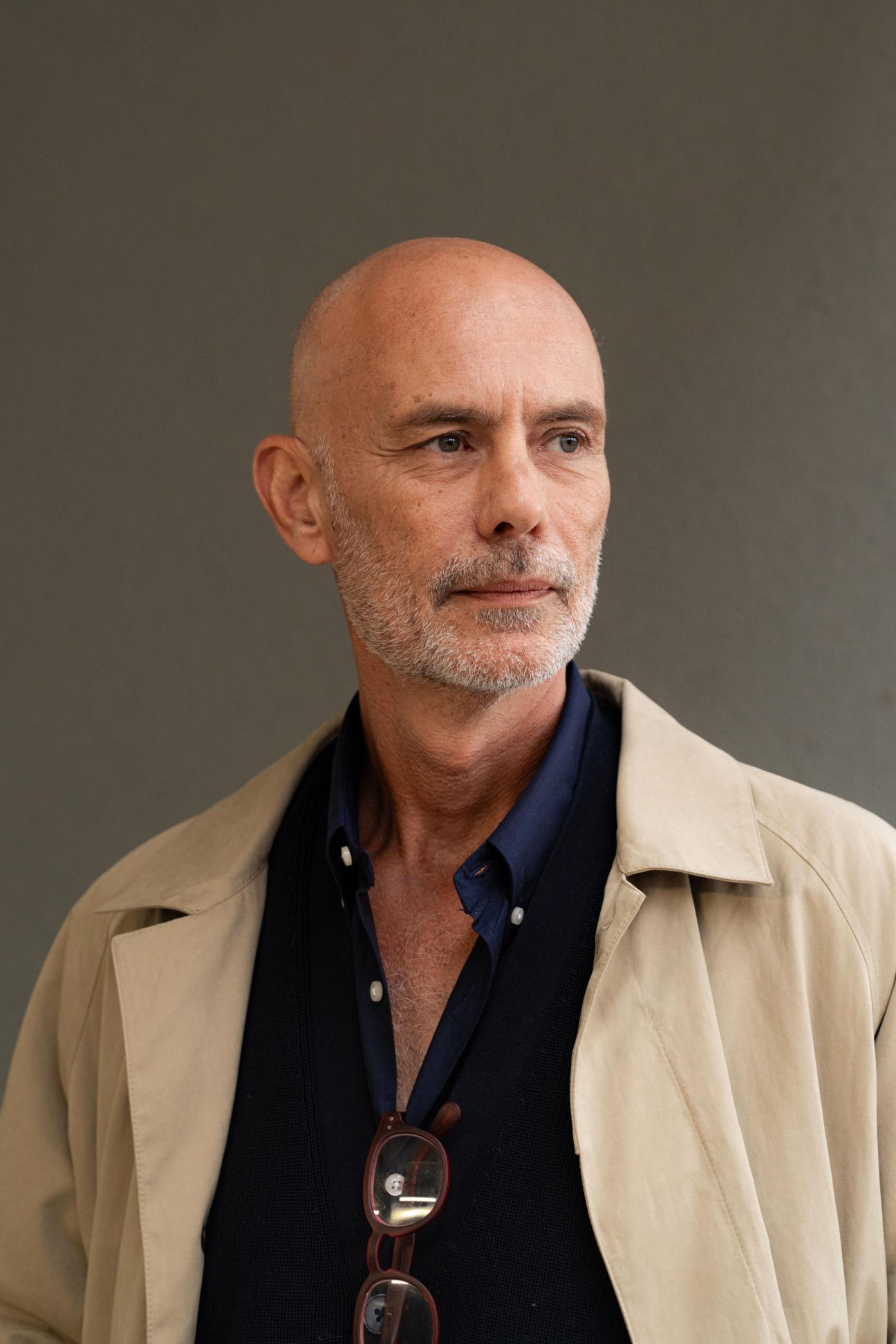
“Non-fiction, at least in the American context, has struggled this year. There has been more desire on the part of readers to centre themselves, to find greater meaning and more significance, and they might find that more readily through fiction. In terms of which types of books readers are buying, I’m seeing a little bit of everything: romance, cosy mysteries, literary fiction. And perhaps the boundaries are now becoming more porous.
In many ways it’s a good time for the small, nimble, mid-sized publisher, because the larger companies have shareholders and tend to play it safe and many better, more interesting books feel too risky. As a smaller publishing house, we can take more risks with less predictable books.”
Reynolds’ title to look out for in 2025
‘Gabriële’ by Anne and Claire Berest
2.
The agent
Juliet Mushens, Mushens Entertainment
London, UK
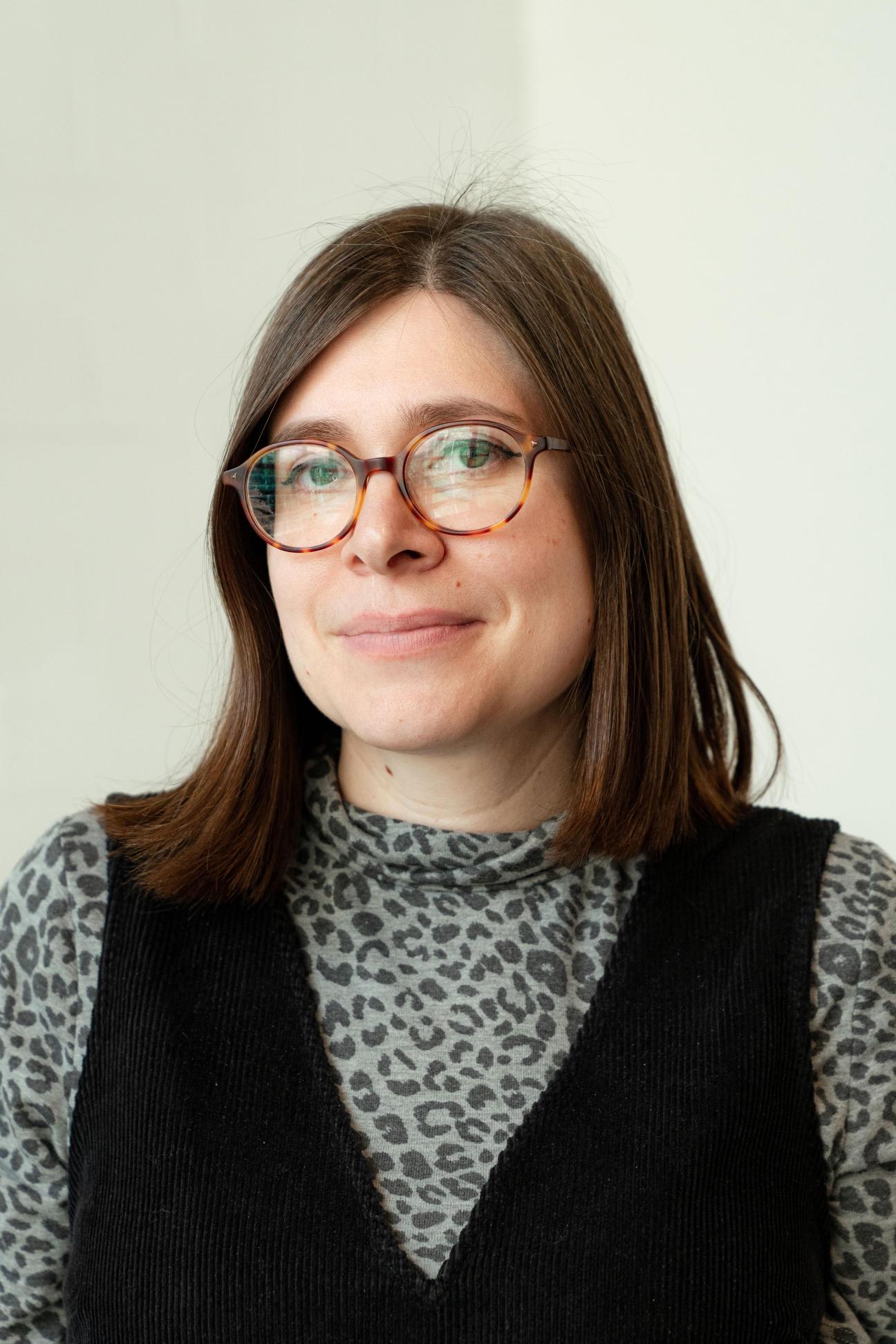
“We’re finding that readers are responding well to escapist fiction. I suppose the state of the world can be horrifying enough that people want to escape into something which transports them to a different time and place. Crime thrillers are still successful, because you catch the bad guy right at the end of it, you know who the villain is and there’s some kind of resolution.
Fantasy is also much more successful than it has been. I’m president of the British Fantasy Society and have represented fantasy for my whole career. We’re seeing lots of publishers who have never bought fantasy before starting to acquire it for their lists. We’re seeing authors who have been published for years suddenly getting a new jacket, or people rediscovering old books written by them years ago. Fantasy has seen big growth over the past couple of years and I think that will continue.”
Mushens’ title to look out for in 2025
‘Bitter Sweet’ by Hattie Williams
3.
The audiobook expert
Carlo Carrenho, Carrenho Publishing Consulting
Trosa, Sweden
“We’re getting to a point where books are being voiced by AI-generated actors and writers are being influenced by the audio format, which is changing the way books are being written. Would Gabriel García Márquez have written One Hundred Years of Solitude today? That story would not do well as an audiobook.
In a more positive light, we’ve had a huge milestone in audiobooks this year with Spotify introducing the subscription model to the English-speaking markets. Now it’s expanding to France, Belgium and the Netherlands. I think in the coming year we will see more and more people listening to audiobooks. In Sweden, 60 per cent of purchased books are audio, so in many places people are already listening more than they’re reading.
In terms of what types of audiobooks people are listening to, it depends on geography. In Scandinavia, fiction is popular; it’s about storytelling; people just want to travel, be distracted. But if you go to southern Europe and Mexico, people are listening to non-fiction books, mostly business and self-help.”
Carrenho’s audiobook to look out for in 2025
‘The Intruder’ by Freida McFadden
Interview: Hines co-CEO Laura Hines-Pierce shows us her office of the future
When monocle walks into the lobby of Texas Tower, the pleasant scent of sandalwood and primrose wafts through the air. The Italian-marble floors and white coffee tables suggest a well-appointed living room – albeit one with numerous power outlets and task lighting at the ready. Well-dressed professionals sit and chat in richly upholstered chairs, before heading further up to one of the downtown Houston office building’s 47 storeys.
Designed by Pelli Clarke & Partners, the building, which opened in 2021, is 81 per cent leased at the time of our visit. Texas Tower’s vibrancy is no mean feat at a time when the office market is sagging across North America. Both the building and its owner and developer, Hines, the global real-estate investment manager that has its headquarters here, are bright outliers. Despite a global downturn in the office market, the 67-year-old family business is riding high. Three regional headquarters – Grainhouse in London, West Edge in Los Angeles and 555 Greenwich in New York – debuted in the past year. The company has also recently opened branch offices in New Zealand and Vietnam, and announced several new trophy properties, including a 74-storey mixed-use complex in Busan.
With $93bn (€87bn) in assets, Hines’ executives are confident that the company’s historic investment in top-grade buildings will ensure that it benefits from the market phenomenon in which financiers move capital into more stable assets. As companies downsize their offices because of the rise in remote working, remaining tenants are able to choose from a glut of available options and seek out only the best. This is what’s referred to as the “flight to quality”.
After a whistle-stop tour across Houston to witness the property legacy of the company’s founder, Gerald D Hines, monocle ascends to the 33rd floor of Texas Tower to meet its third-generation leader, Laura Hines-Pierce. The Harvard-trained executive joined the family business in 2012 and cut her teeth as project manager for a 52-storey office tower with a park next to the Chicago river.
A decade later, she was installed in the business’s upper echelons. Hines-Pierce lives in Houston with her husband and two children, and takes a hands-on approach to the company’s global portfolio. Her family spent much of last year abroad as she worked out of regional offices in Asia and Europe to better acquaint herself with her team and the cities where Hines operates.
She and her father, Jeffrey Hines, now operate as co-ceos. The latter is focused on keeping the business strong; Hines-Pierce, in turn, has the luxury of planning for the future and taking on the challenge of stepping out of the shadow of her family’s legacy. Working from an office where her grandfather’s slide rule and camera are displayed like treasured museum artefacts, the 40-year-old executive represents a fresh face for this storied business.
Why does Hines invest so heavily in design?
It’s the area where my grandfather was a pioneer and shifted the industry. When he was pitching the opportunity to develop Shell’s North American headquarters, his first high-rise office, he didn’t have anything in his portfolio taller than 14 storeys. Other developers came with plans and models. He picked up a high-quality German-engineered doorknob that had weight and heft, and said, “I’m going to deliver quality in every aspect of the building, right down to the doorknobs.” His philosophy was that if you invest upfront in quality design, you create value by leasing a building faster. You also incur fewer operating expenses for replacing low-quality elements and fetch a higher price when you sell. That theory has been proven.

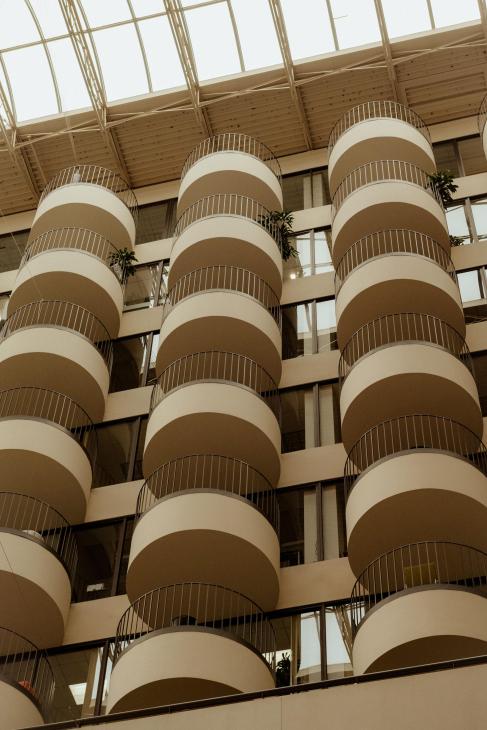
How would you explain Hines’s appeal to a company trying to choose between you and a competitor?
There has been an evolution in our industry from a focus on high-quality physical design elements alone to thinking also about the user experience. That starts on the streetscape, with how a building interacts with a community. What is the experience as you’re moving through the space? How is it positively affecting your quality of life on a day-to-day basis? Quality and design have expanded from the level of a physical asset to one of how you operate and manage.
Our goal is to bring a mixed-use feel to the office, which has historically been a single-use asset class. We aspire to provide hospitality in a way that makes people’s lives easier and works for their commute. We aim to provide physical spaces that deliver a variety of different work environments and an entertainment or culinary experience if required, as well as excellent user experience that encompasses on-site services such as tailoring, dry cleaning or even vitamin and IV drips.
We hired Forbes Travel Guide to advise on how to stock and display amenity kits in our restrooms and mothers’ rooms, and we train our staff in how to assist clients: if they have their hands full, offer a helping hand; if they ask for directions, offer a partial escort; if they ask about restaurants, offer to book a reservation.
We call this our holistic hospitality approach. For office workers, the advancements are designed to make attendance not just necessary but desirable. Think of it as our way of saying that we care about every moment that you spend in our properties. It’s all about making those everyday tasks a bit lighter for everyone. We want our properties to be more than just workspaces. We want to create exceptional experiences.
You recently toured Hines offices around the world. What did you learn about where cities are heading?
We’re seeing cities with a true mix of uses performing much better than those with single-use districts. This trend is evident worldwide and there is a noticeable shift away from specific business or retail districts. Instead, we are witnessing much more integration, because people want a blend of amenities around them.
Take, for example, Century City in Los Angeles, which is mostly mixed use. Class-A vacancy has never been lower, net rents have never been higher and there’s new construction under way that is 100 per cent pre-leased. Compare that with downtown LA, which is primarily single-use and a very different story, even though it’s just 12 miles away.
Every property firm professes to have some kind of green or sustainability credentials but the market downturn has forced some to cut back on energy retrofits and other efficiency measures. How does Hines approach this concern?
Given his mechanical-engineering background, my grandfather started us on that path because it was just good business: you can save operational costs by having better design and lower energy usage. Tenants are looking for spaces that aren’t adding to their carbon footprint.
We are expanding our existing New York office into what has been called the greenest building in the city. It’s already 45 per cent below New York’s regulatory emissions target for 2030 because it uses geothermal heating and cooling. In every new investment, we are underwriting the path to net zero. It’s a very big consideration when we’re weighing up an investment.
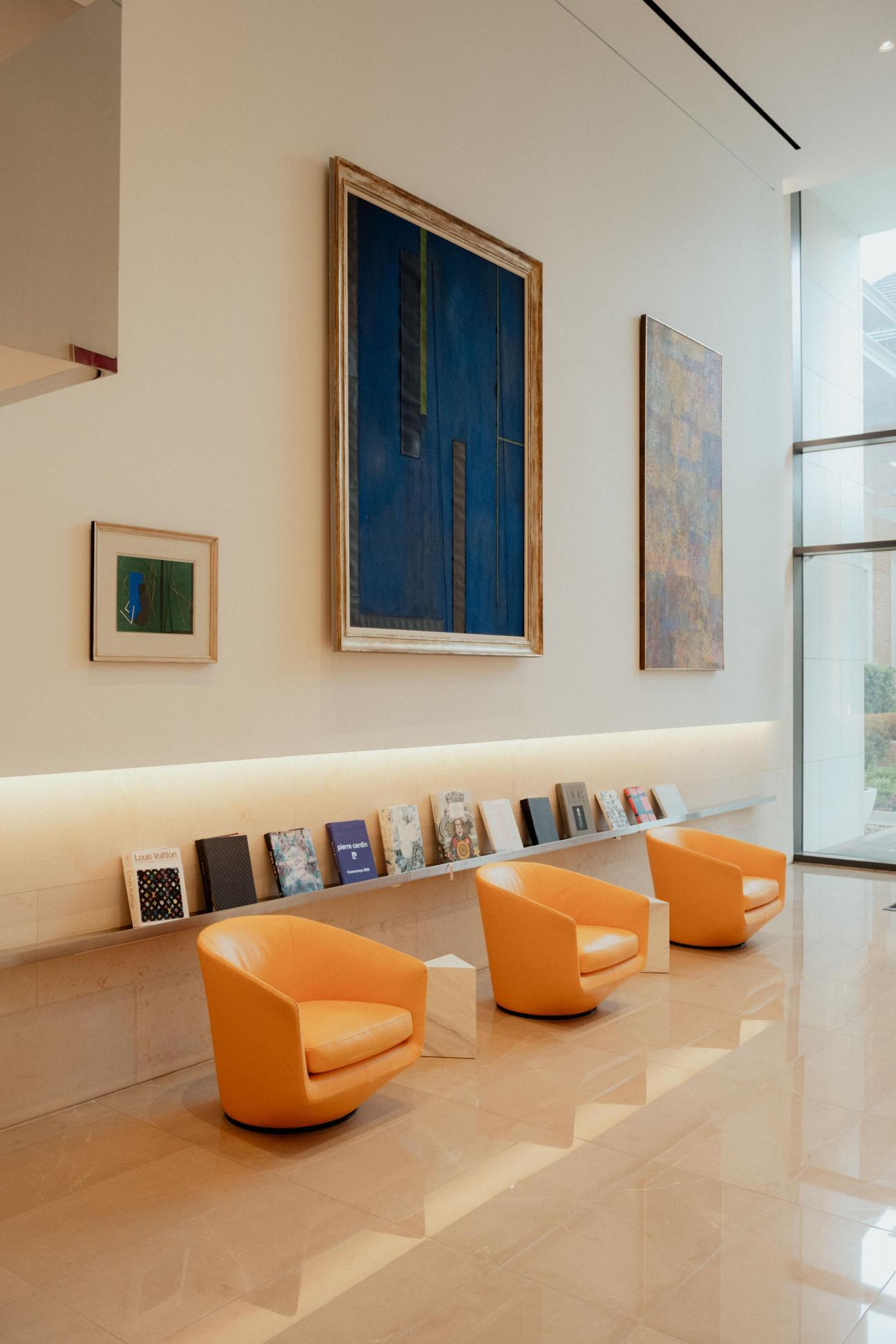
How has Hines’s business model changed with the times?
We’re increasingly integrating workspace elements into residential properties to create exceptional work-from-home set-ups, while developing dining and retail options that complement office environments. Work, leisure and living spaces are overlapping and there’s a growing need for properties to seamlessly blend these elements. As product types continue to converge and blend, the success of a project is partly determined by how well the physical structures and on-site experiences support people’s evolving needs.
There’s work, play and living. And it’s important to bring those experiences together. That’s the design element that people are looking for but can’t really put their finger on.
hines.com
Inside Hong Kong’s Club Bâtard, positioning itself at the pinnacle of Asia’s wine hub

As Hong Kong’s hardy economy braces for another uncertain year, the city’s landlords and hospitality industry are having to pull out all the stops – and a fair few corks – to keep things flowing. November 2024 saw a show of newfound confidence in the city’s hospitality in the form of Club Bâtard in the central business district. The members-only drinking and dining destination pairs three restaurants and 300 covers with a three-storey wine cellar – the biggest walk-in cellar in Hong Kong; possibly even Asia. Memberships are capped at 1,200 and the majority were snapped up by the time the contractors began to pour concrete.
Club Bâtard’s appeal is remarkably simple: drinking quality and paying less for it. Bottles are reasonably priced when compared to the hefty mark-ups at five-star hotels and high-end restaurants. And since Hong Kong abolished all wine taxes in 2008, that makes a glass of bordeaux or burgundy at Club Bâtard competitive across the region. “A lot of people go to Shenzhen to have good food but here the traffic is moving in the opposite direction,” says Michael Wu, who founded the club with Linden Wilkie and Randy See. “Hong Kong will always be the wine hub of Asia,” he says.
Wilkie and Wu are founders of The Fine Wine Experience, a wine cellar in Sai Ying Pun with a restaurant inside founded by See, named Bâtard. Having successfully tested this combination in a quiet, residential area of Hong Kong island, they are now taking a proven concept to the heart of the city’s hectic commercial district. Club Bâtard has taken three storeys of the Pedder Building, a rare pre-war heritage structure surrounded on all sides by high-end shopping centres and office towers. Every floor features a different restaurant and the flavours on each menu are designed to go well with the wine stocked in the adjacent cellar – the centrepiece and star attraction.
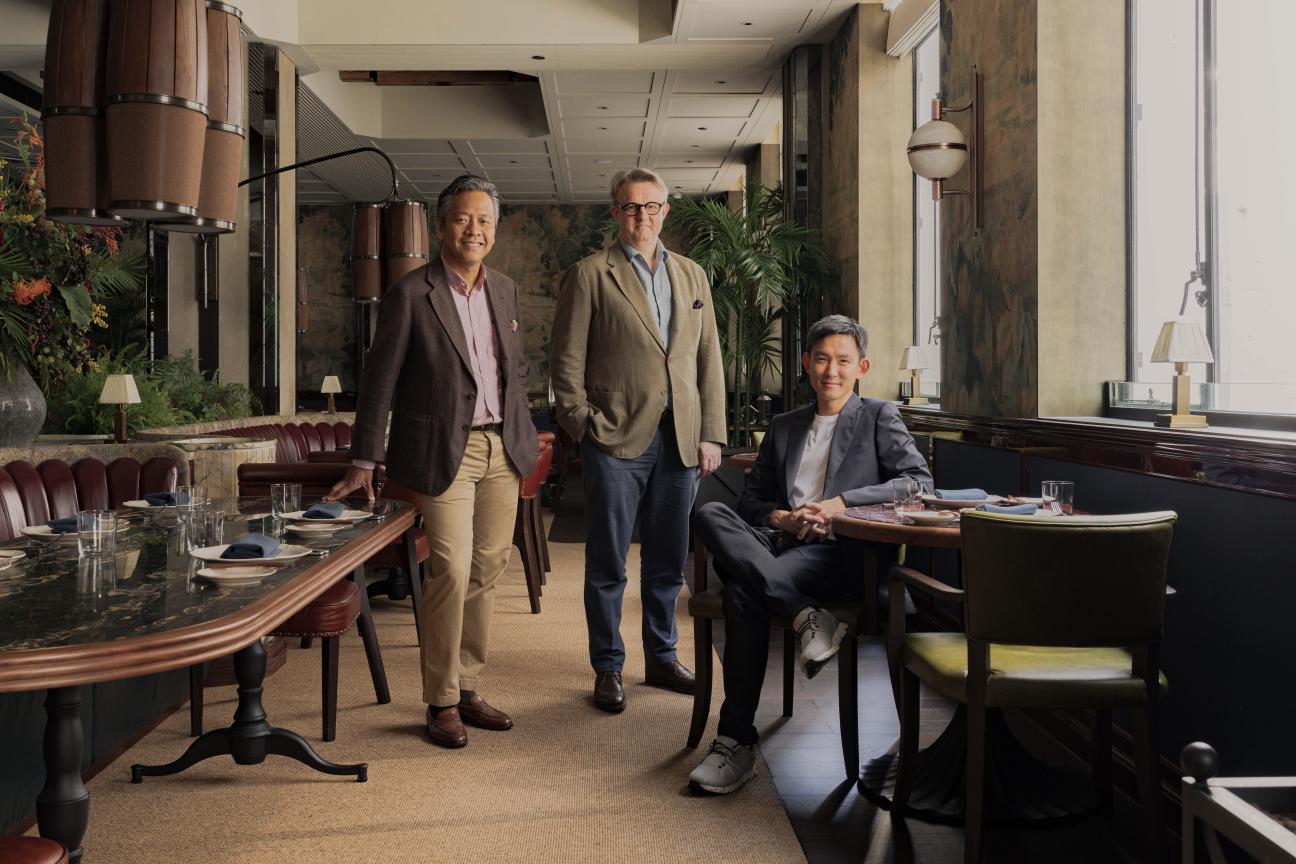



According to Wilkie, the three founders want Club Bâtard to be a place that brings together a community of wine lovers, suppliers and sommeliers. “Guests know each other, they ask what each other are drinking and they bring glasses over – that’s the whole idea,” he says, beaming. Though it is still early days, faces are already starting to become familiar to staff, while some members are treating the address like a second home, dropping by for breakfast at Le Clos then returning for dinner with a group of friends at French restaurant Bâtard or Hop Sze, a Cantonese favourite. There’s also a whisky bar and two karaoke rooms for good measure.
Hospitality designer Joyce Wang oversaw all of the interiors, working with fellow Hong Kong studio Sensis, a wine-storage specialist, on the cellar. Wood is the primary material, with the colours getting progressively lighter: dark walnut on one, where the oldest, dustiest reds are kept; honey-toned burl wood on two and the lightest tones at the top to represent the canopy of a tree and the champagnes on display.
Each restaurant is accessible by elevator but for those who can manage the stairs, climbing up and down the wine cellar is a core part of the experience. Knocking through two ceilings in a historical building to create this integral architectural feature required approval from the authorities and the support of the building’s owner. “All of this could not have been achieved without the landlord sharing our vision,” says co-founder Wu, who is one of Hong Kong’s leading burgundy merchants.


The cellar’s 12,000-strong collection balances top wineries and small growers. Bottles range from hk$500 (€59) to more than hk$2m (€236,550); the oldest label is a 1898 vintage Château Latour. Members also have access to a warehouse of about 150,000 bottles, which they can browse online to place pre-orders before their next visit. French regions dominate, though wine director Della Tang is keen to diversify. The sweetness and clear-cut acidity of German riesling, for instance, pairs well with the Cantonese dishes served at Hop Sze, such as the “stir-fry king” with dried prawns and chives.
Club Bâtard’s food is overseen by See, the seasoned restaurateur behind Piccolo Concepts, a subsidiary of Singapore’s Les Amis Group. He develops menus and recipes with the club’s head chefs. The goal of “straightforward and versatile” dishes, such as Bâtard’s signature roast chicken and duck burger, is to make wine fun and a little less formal, he says.
The culinary bait is also bringing new drinkers to the table. Managing director Timothée Lesné and his front-of-house team has identified a sub-category of beginner-level members keen to learn about wine and embark on a wine-appreciation journey. Introductory classes on how to read a map of Burgundy or navigate a list of grands crus are proving surprisingly popular, alongside the traditional wine- tasting events that cater to connoisseurs. We’ll drink to that. clubbatard.com
On the up: wine in Hong Kong
China’s economic slump hit Hong Kong’s wine industry hard in 2024. But one of the region’s biggest trade events, Vinexpo Asia, returned to Hong Kong in May 2024 after a six-year dry spell. And Australian vineyards have turned out in force after Beijing lifted punitive tariffs; it is now second only to France as a supplier. Meanwhile, stimulus measures being rolled out by the central government to revive the economy should uncork consumer confidence further in 2025. As optimism returns, buying habits are changing: value for money is more sought after, with some rarer vintages left on the shelf. So where’s the market? Fine wine at a fair price, it seems.



